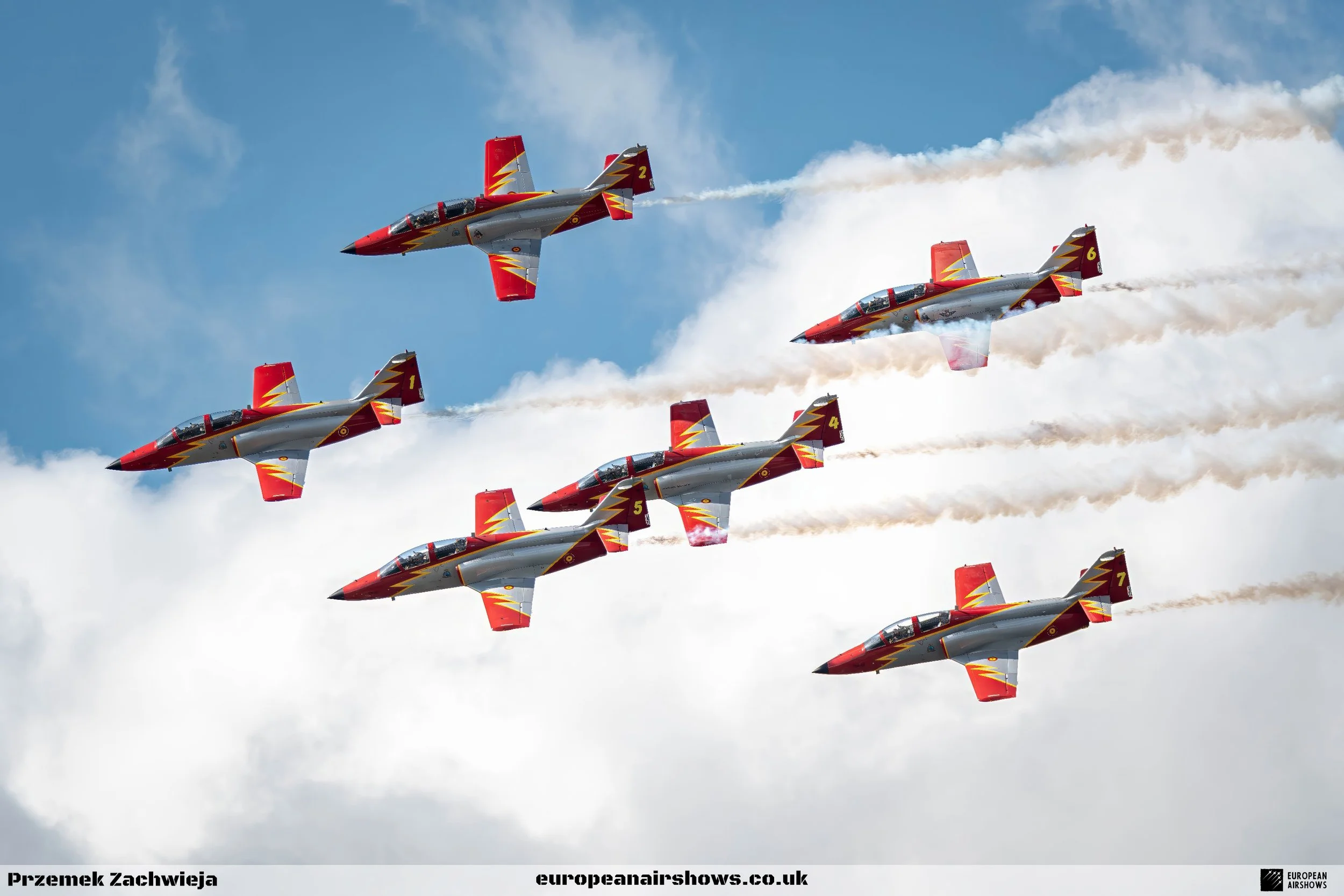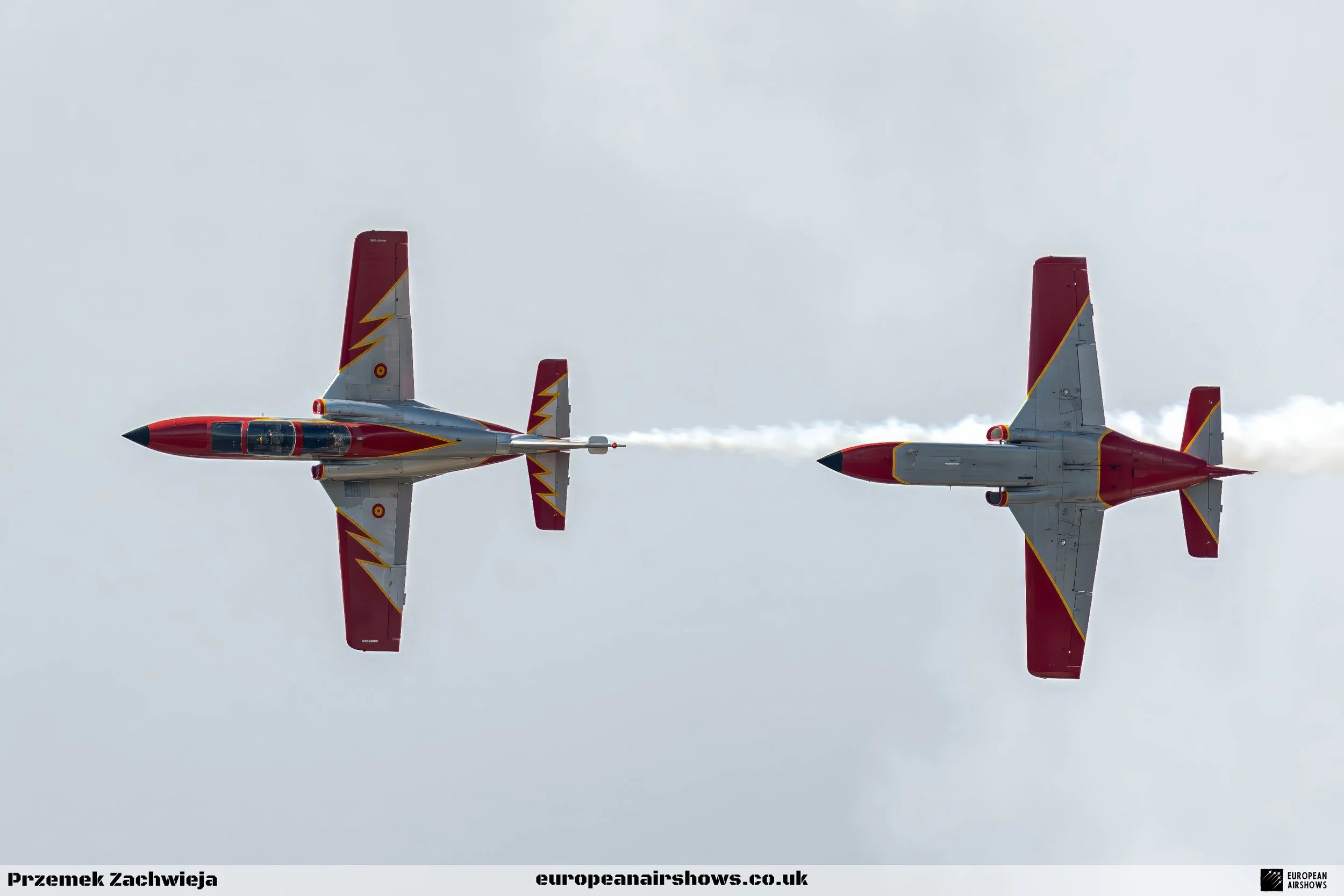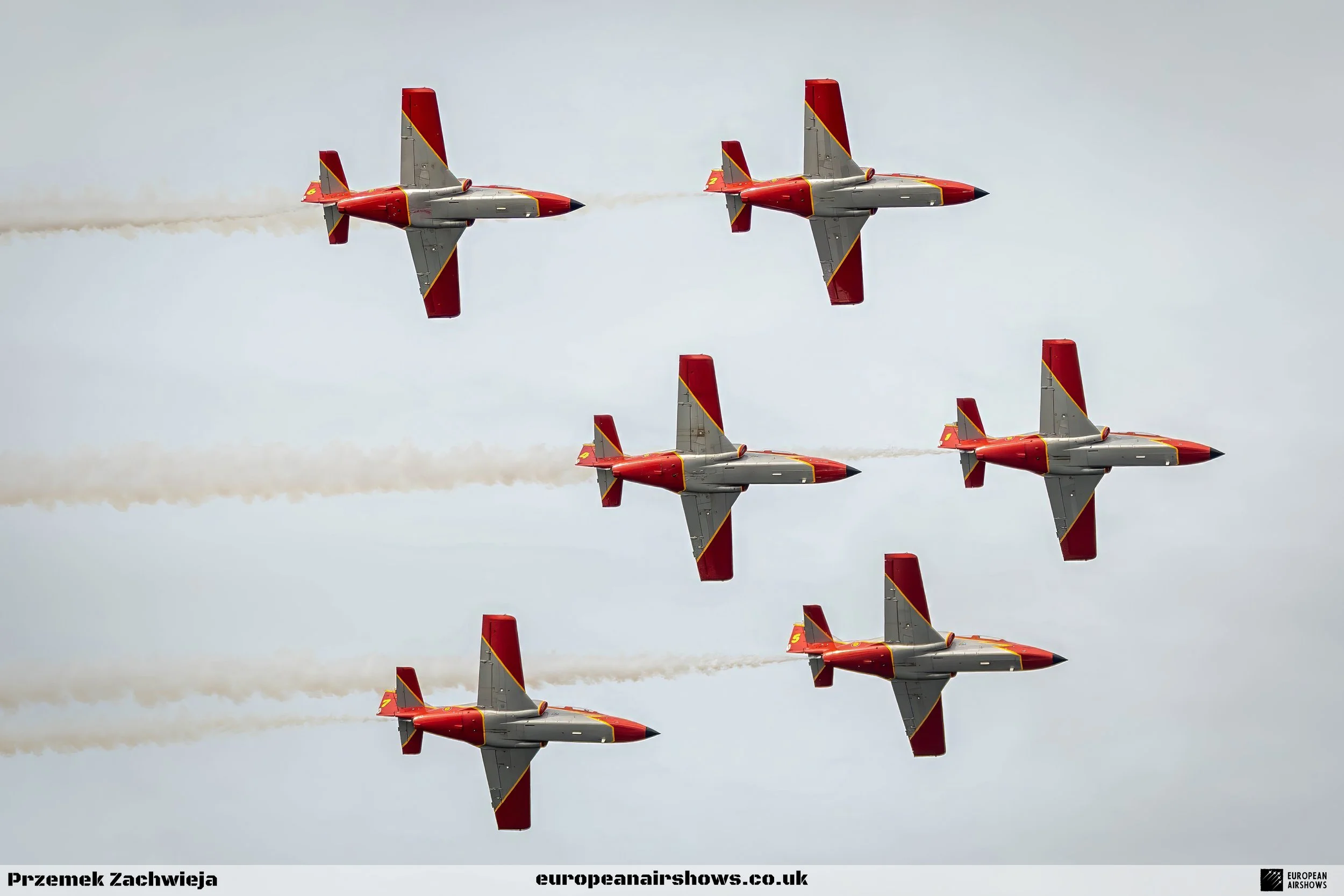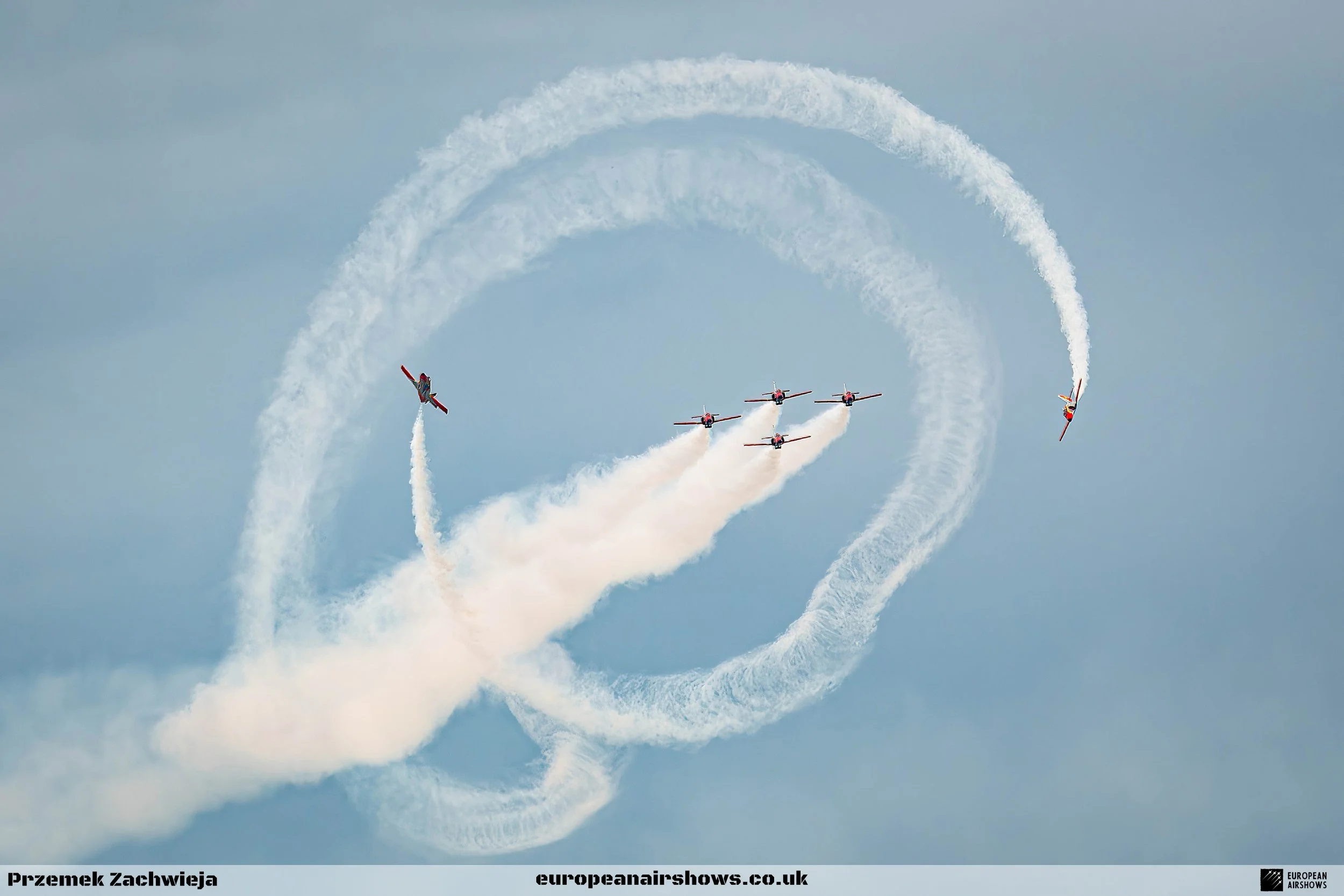Patrula Aguila to wow crowds at the Beja International Airshow 2024
The Spanish Air Force's Patrula Aguila aerobatic display team will be performing in Portugal at the Beja International Airshow 2024, the biggest airshow in the country. The event is scheduled to take place on June 1st and 2nd, 2024, at Air Base No. 11 (AB11) in Beja.
The Beja International Airshow 2024 is an eagerly awaited aviation event in Portugal, which is scheduled to take place on June 1st and 2nd, 2024, at Air Base No. 11 (AB11) in Beja. This two-day event is expected to attract aviation enthusiasts from all over the world, offering them an opportunity to witness some of the most exciting aerobatic displays, military flybys, and demonstrations of advanced aviation technologies.
One of the most thrilling attractions of the airshow will be the Patrula Aguila, the aerobatic display team of the Spanish Air Force. The team will be performing with six CASA C-101 Aviojet aircraft, which will be painted in their signature red, yellow, and silver colour scheme while trailing white, red, and yellow smoke. The Patrula Aguila team is known for their breathtaking aerobatic displays, and they are expected to deliver a stunning performance at the airshow.
Patrula Aguila at RIAT 2023
Along with the Patrula Aguila, other international performers have already been confirmed, including the Patrouille Suisse, the aerobatic display team of the Swiss Air Force, the Gripen solo display of the Hungarian Air Force and the French Air and Space Force Couteau Delta tactical demonstration team. All these performances are sure to impress the audience with their incredible skills and precision.
In addition to the aerobatic displays, the airshow will also feature military flybys and demonstrations of advanced aviation technologies. Visitors will get a chance to see some of the latest aircraft in action, including fighter jets, transport planes, and helicopters. There will also be a static display of aircraft, allowing visitors to get up close and personal with some of the most impressive aviation technology.
The Beja International Airshow 2024 is expected to be an unforgettable experience for all who attend. The event promises to offer a unique opportunity to witness the best of aviation and the latest technology in action. So, mark your calendars for June 1st and 2nd, 2024, and head to Beja to be part of this incredible event.
Patrula Aguila
Patrulla Águila, the aerobatic demonstration team of the Spanish Air Force, was established on July 4, 1985. The team is stationed at the San Javier Air Base, located near Mar Menor and La Manga in the beautiful Murcia region of Spain. The team is made up of 11 pilots, each with the callsign "Aguila," and 30 ground personnel, including 16 first-line technicians who travel with the team and maintain the jets during airshow season. The team is equipped with 12 Spanish-built CASA C-101 Aviojet jet trainers, but only six or seven of them are used in airshows.
All of the team's pilots are full-time flight instructors with diverse military backgrounds who participate in the aerobatic team in their free time. Patrulla Aguila is one of the few teams in the world to have a spare display pilot who can take over if needed.
Patrulla Aguila is well-known for its use of yellow smoke, which makes it the only military team in Europe to use it. The team is also well-known for its formation landings. The team performs three different displays based on weather conditions: a high display when the cloud base is greater than 4500 feet at the base of the manoeuvre, a low display when the cloud base is greater than 2500 feet at the base, and a flat display with the cloud base from 1500 feet at the base.
The team's 20-minute display is divided into two halves. In the first half, all aircraft perform close formation aerobatics, including barrel rolls and loops, while constantly changing formations. In the second half, the team separates into two formations: a basic four-ship formation and a synchro pair. Patrulla Aguila is the only team in the world to perform an inverted loop on a jet, a very challenging and uncomfortable manoeuvre performed by the team's most experienced solo pilot.
CASA C-101 Aviojet
The CASA C-101 Aviojet is an advanced jet trainer and light attack aircraft that was developed for the Spanish Air and Space Force by the Spanish aircraft manufacturer CASA. The development of the aircraft began in the late 1960s, with assistance from Germany's MBB and Northrop.
The Aviojet belongs to the same generation of jet trainers as the BAe Hawk and the Dassault Alpha Jet. However, it has a simpler design than these aircraft. It is a single-engined aircraft with a low-mounted wing and a T-tail. The aircraft's cockpit has two seats, with the instructor and the student sitting side by side. The aircraft's avionics suite includes a head-up display, navigation systems, and communication systems.
The Aviojet has three variants. The first is the C-101EB, which is a dedicated trainer version. The second is the C-101BB, which is a combined trainer/light attack variant with a more powerful engine. The third is the C-101CC, which is a dedicated attack aircraft similar to the BAe Strikemaster. The C-101CC is equipped with a 30 mm DEFA cannon and can carry a variety of other weapons, including rockets, bombs, and missiles.
The Spanish Air and Space Force was the only customer for the original C-101EB variant and ordered 88 aircraft, which were delivered from 1980 onwards. Although the aircraft is internationally known as the C-101 Aviojet, the Spanish Air and Space Force designated it as the E.25. The CASA-101 was based at San Javier and was retired from the training role in August 2022 when it was officially replaced by the Pilatus PC-21, known as the E.27. The Aviojet, however, will continue in service with the Spanish Air and Space Force as a combat trainer and as the display aircraft of the national display team, the Patrulla Águila.
Overall, the CASA C-101 Aviojet is a reliable, versatile, and cost-effective aircraft that has served the Spanish Air and Space Force well for over four decades. Its simple design, ease of maintenance, and excellent performance have made it a popular choice for air forces around the world.

















